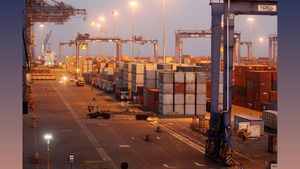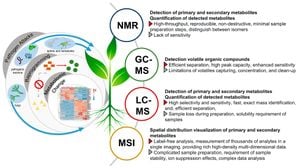The recent 2025 Bundestag election results reveal significant shifts across various federal states, with the total number of representatives reduced to 630, down from 733 due to electoral reforms. The outcome not only highlights changes in party dominance but also shifts the composition of the Bundestag significantly.
Starting with Niedersachsen, the number of deputies has decreased from 74 to 65. According to the State Returning Officer of Niedersachsen, this reduction is attributed to the reform limiting the Bundestag's member count. A noteworthy shift is the elimination of overhang and compensatory mandates, meaning successful constituency candidates are now solely reliant on their party achieving sufficient second votes to secure their seats.
Among the newly elected representatives from Niedersachsen, the CDU (Christian Democratic Union) emerged as the strongest party with 28.1 percent of second votes, followed closely by the SPD (Social Democratic Party) at 23.0 percent, and the AfD (Alternative for Germany) at 17.8 percent. The composition of the 65 deputies includes 21 from the CDU, 17 from the SPD, 13 from the AfD, 8 from the Greens, and 6 from the Left party, with only 24 of them being women.
Meanwhile, Brandenburg also noted shifts. The newly formed Bundestag will have 21 representatives from the state. According to the Bundeswahlleiter (Federal Returning Officer), the constituency Oberhavel-Havelland II remains unoccupied due to insufficient second votes. The distribution stands at 8 members from the AfD, 4 from the CDU, and 4 from the SPD, with the Left and Greens holding 3 and 2 seats, respectively. Notably, only Olaf Scholz of the SPD managed to secure direct election against candidates from other parties.
The results for Brandenburg displayed how the AfD successfully won eight direct mandates across various constituencies. For example, Birgit Bessin of the AfD gained 43 percent of first votes within her constituency, showcasing the party's growing influence. Dr. Götz Frömming and Rainer Galla both claimed their respective districts with remarkable percentages, continuing the AfD's trend of capturing considerable electoral support.
Not every party fared as well; SPD candidate Maja Wallstein, who previously secured her district, was dethroned by AfD competition. She and fellow SPD representative Sonja Eichwede eventually made it to the Bundestag through party lists, along with Olaf Scholz, who narrowly held his direct mandate.
On the other hand, the Saarland faces its own challenges. The number of representatives has decreased from nine to eight, and the SPD captured the Saarbrücken district with Josephine Ortleb winning 32.4 percent of the votes. Roland Theis and Philip Hoffmann, both CDU, secured their districts, leading to the CDU’s formidable presence alongside the SPD.
Looking at the overall picture, the changes within the Bundestag's composition hint at significant ideological shifts and potential future negotiations among parties. The elimination of overhang seats reflects efforts to streamline representation and may lead to more streamlined governance.
Observers are noting this election as a pivotal moment, emphasizing how the results could affect future coalition talks and election strategies—especially for the parties like the AfD, which leverage rising public frustration with traditional political mechanisms. Moving forward, the focus will be on how these parties will navigate this new political terrain and whether their approaches will align or clash.
This election marks the beginning of new discussions on national policy priorities, as established parties react to the electoral trends, and the potential coalition dynamics are reshaped once again based on these results.



